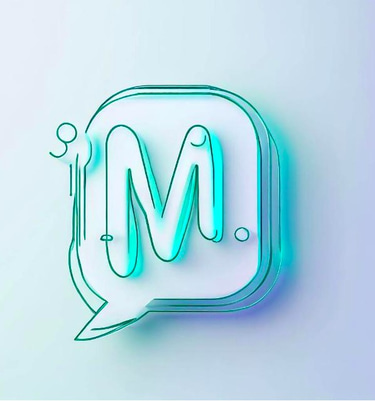The Power of Sora: Democratizing AI Technology
SORA is an AI model that can generate realistic and imaginative videos from text instructions. SORA uses a technique of latent diffusion - a latent distribution model that uses a single transformer as a denoiser. SORA can generate videos of up to one minute while maintaining quality and alignment with the user’s instructions. SORA was developed by OpenAI, an AI research organization whose goal is to create and make accessible AI that can positively impact humanity.
#DIGITALTRANSFORMATION#OPENAISORA #OPENAIUPDATES #AIFUTURE#ETHICALAI #CREATIVEAI #INNOVATIONINAI #TECHTRENDS #AIACCESSIBILITY
David Kochav
2/17/20243 min read
How Sora Can Create Amazing Videos from Text
Have you ever wished you could create a video just by typing a few words? Imagine being able to generate realistic and imaginative scenes from text instructions, without any editing or filming skills. Sounds like science fiction, right?
Well, not anymore. Meet Sora, the latest AI model from OpenAI that can create videos from text. Sora is a text-to-video model that can produce videos up to a minute long that match the user’s instructions on the content and the style. For example, one can ask Sora to generate a movie trailer featuring a spaceman in a red helmet or a nature documentary about penguins.
In this post, we’ll explore how Sora works, what it can do, what are its limitations, and why it matters for the future of video creation and consumption.
How Sora Works
Sora is based on the technology behind DALL-E 3, the third version of OpenAI’s text-to-image model that can generate images from natural language prompts. Sora uses a diffusion transformer architecture, which is a type of generative model that can learn to produce high-quality images or videos by gradually refining them from noise.
Sora also uses a technique called recaptioning, which allows it to adjust the generated video according to the user’s prompt. Recaptioning means that Sora can take an existing video and modify it to match a new caption, by adding, removing, or changing objects, colors, or actions. For example, Sora can take a video of a car driving on a road and recaption it to a car flying in the sky.
What Sora Can Do
Sora can generate videos from text for a wide range of domains and genres, such as nature, sports, animation, history, and fiction. Sora can also handle different styles and moods, such as realistic, artistic, humorous, or dramatic. Sora can even create videos that do not exist in reality, such as a papercraft world of a coral reef or a giant wooly mammoth in a snowy meadow.
Sora can also extend existing videos forwards or backwards in time, by predicting what would happen next or what happened before. For example, Sora can take a video of a person walking and extend it to show them running or sitting down.
Sora’s videos are impressive in their visual quality and adherence to the user’s prompt. Sora can capture the details, textures, lighting, and motion of the scenes, and generate smooth and coherent videos that look natural and realistic.
What Are Sora’s Limitations
Sora is not perfect, and it still has some challenges and weaknesses to overcome. Some of the limitations of Sora are:
Inaccurate physical modeling: Sora may not always follow the laws of physics or the common sense of the real world. For example, Sora may generate videos where objects float in the air, collide without impact, or change size or shape randomly.
Unnatural object morphing: Sora may not always preserve the identity and consistency of the objects in the videos. For example, Sora may generate videos where objects change color, texture, or appearance without explanation, or where objects morph into other objects or disappear completely.
Implausible motion: Sora may not always generate realistic and natural motion for the objects and characters in the videos. For example, Sora may generate videos where objects or characters move too fast, too slow, or in an awkward or unnatural way.
Why Sora Matters
Sora is a breakthrough in the field of video generation and simulation, and it has many potential applications and implications for the future. Some of the possible uses of Sora are:
Creative expression: Sora can be a powerful tool for artists, designers, filmmakers, and storytellers, who can use it to create stunning and original videos from their imagination. Sora can also be a source of inspiration and entertainment for anyone who wants to explore and experiment with different scenarios and styles.
Education and research: Sora can be a valuable resource for educators, researchers, and students, who can use it to visualize and explain complex concepts, phenomena, and events. Sora can also be a way to generate synthetic data and scenarios for training and testing other AI models and systems.
Communication and collaboration: Sora can be a new medium for communication and collaboration, where people can share and exchange ideas, opinions, and emotions through videos. Sora can also be a way to enhance and enrich existing media, such as text, images, or audio, by adding video elements.
Conclusion
Sora is an amazing AI model that can create videos from text, opening up new possibilities and challenges for video creation and consumption. Sora can generate realistic and imaginative scenes from text instructions, as well as extend existing videos forwards or backwards in time. Sora is not without limitations, and it still has some issues with physical modeling, object morphing, and motion generation. Sora is also a powerful and potentially disruptive technology, and it requires careful and responsible use and regulation.
If you want to learn more about Sora, you can visit its official website, where you can see more examples of videos generated by Sora, read the technical report2

